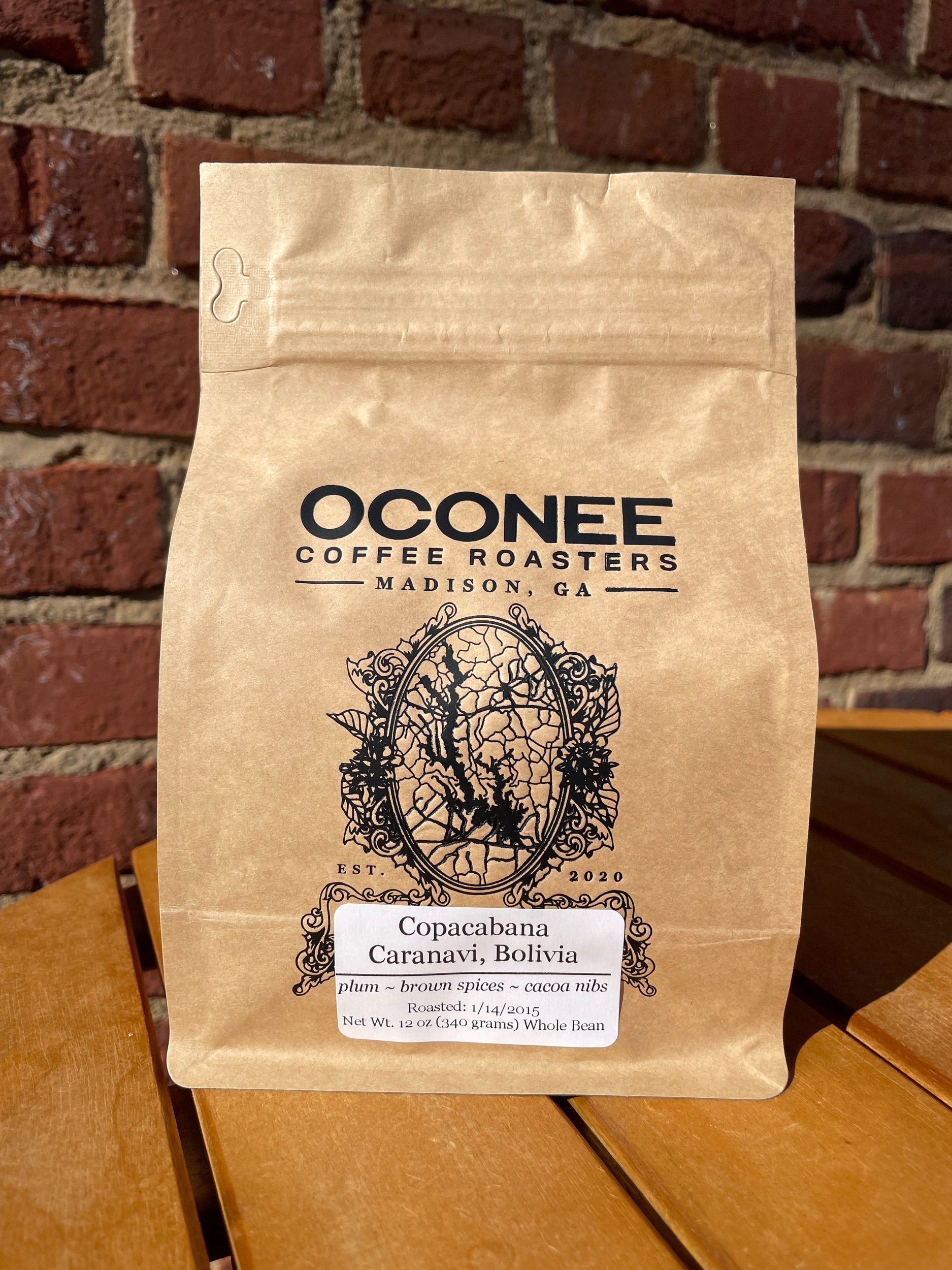 Image 1 of 1
Image 1 of 1


Copacabana - Caravani, Bolivia
Copacabana is a community of 35 families in the province of Caranavi, the largest coffee producing region in Bolivia.
Caranavi became a coffee hub in the 1960s with Bolivia's agricultural reform, peaking in the 1990s as exports focused on volume. Recently, local initiatives have promoted quality through competitions and subsidized seedlings. Coffee is central to Caranavi’s culture, marked by signs as the "Bolivian Coffee Capital," numerous coffee shops, and frequent events. There's pride in coffee farming, with younger generations promising a bright future. Farm sizes average 2-3 hectares; for some, coffee is the main income, while others also grow fruits and coca, which is more profitable but regulated to a quarter hectare. Common fruits include pineapples and citrus. Some farmers sell locally at the Wednesday market or larger city markets, with bartering for supplies like rice and potatoes being common.
During coffee harvest season, Caranavi buzzes 24/7. In Copacabana, producers sell coffee cherries, mainly transported by modified Toyota Ipsums or larger trucks. Collection stations open at 5pm and close at midnight, then coffee is sent to washing stations for depulping and washing starting at 2 or 3 am. Small farms often use family labor, while most hire workers from Caranavi, facing a labor shortage due to new farms. Coffee is primarily shade-grown, but recent trainings are reducing shade trees for better productivity. Producers excel in traditional methods, ensuring high-quality washed coffee.
(Credit: Red Fox Coffee Merchants)
Oconee Coffee Roasters’ tasting notes: brown spices, plum, & cacoa nibs.
Copacabana is a community of 35 families in the province of Caranavi, the largest coffee producing region in Bolivia.
Caranavi became a coffee hub in the 1960s with Bolivia's agricultural reform, peaking in the 1990s as exports focused on volume. Recently, local initiatives have promoted quality through competitions and subsidized seedlings. Coffee is central to Caranavi’s culture, marked by signs as the "Bolivian Coffee Capital," numerous coffee shops, and frequent events. There's pride in coffee farming, with younger generations promising a bright future. Farm sizes average 2-3 hectares; for some, coffee is the main income, while others also grow fruits and coca, which is more profitable but regulated to a quarter hectare. Common fruits include pineapples and citrus. Some farmers sell locally at the Wednesday market or larger city markets, with bartering for supplies like rice and potatoes being common.
During coffee harvest season, Caranavi buzzes 24/7. In Copacabana, producers sell coffee cherries, mainly transported by modified Toyota Ipsums or larger trucks. Collection stations open at 5pm and close at midnight, then coffee is sent to washing stations for depulping and washing starting at 2 or 3 am. Small farms often use family labor, while most hire workers from Caranavi, facing a labor shortage due to new farms. Coffee is primarily shade-grown, but recent trainings are reducing shade trees for better productivity. Producers excel in traditional methods, ensuring high-quality washed coffee.
(Credit: Red Fox Coffee Merchants)
Oconee Coffee Roasters’ tasting notes: brown spices, plum, & cacoa nibs.
